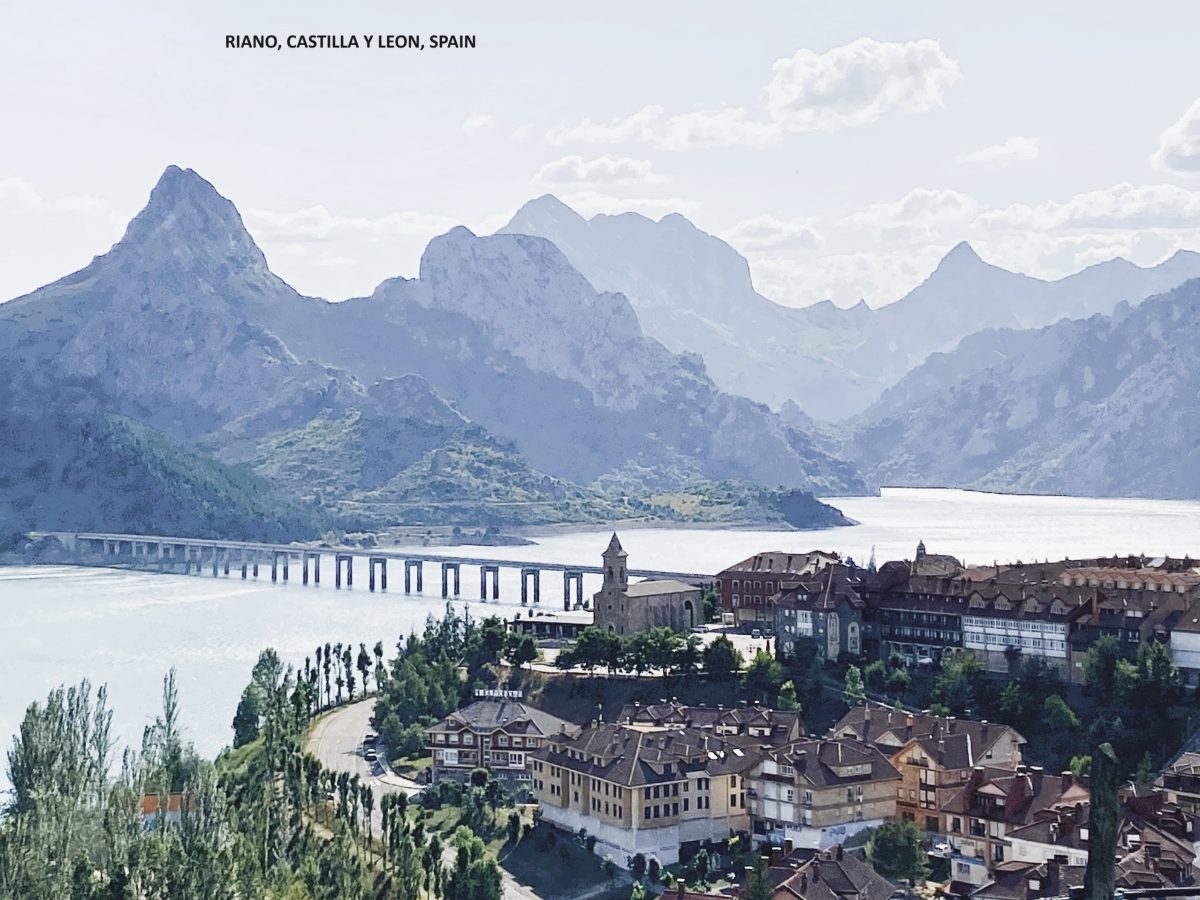And this is where, as so often happens, our plans changed. A pleasant, very interesting and well travelled German couple whom we met in Bacharach recommended we visit Erfurt and Weimar. He is a sportswriter who amongst other things is paid to trial new motorhomes all over the world and his wife was until recently an English high school teacher – no prizes for guessing whose job we most covet. With people such as this, you listen and you respond. We turned the Van around until it was facing Erfurt and off we went. Great decision!
Erfurt is Thuringia’s capital and it’s largest city with a population of 200,000+. The city made it’s money in the Middle Ages as a a trading centre for Woad (a then rare and very expensive blue dye) and it was, no doubt, helped in this regard by being a staging point on the Via Regia (i.e a pilgrim route set up by the Holy Roman Empire and which forms part of the Camino de Compestela) that stretched from Frankfurt am Main to Leipzig and the Polish border. It has a well preserved medieval centre and has been home to some very special people including but not limited to:- Martin Luther (theologian and religious reformer who was ordained in Erfurt); Johann Bach (composer and musician); Johann Wolfgang von Goethe (poet, playwright, novelist, scientist, statesman and all round good egg) and; Johann Friedrich von Schiller (poet, playwright, philosopher and a mucker of Goethe’s).
Talking of musicians, if the number of buskers playing classical (and not so classical) music in the city is anything to go by, the music tradition in Erfurt is in safe hands. They were everywhere during my morning visit into the city and again during the afternoon and evening when I returned with Vanya. Sounds odd but one of my favourites was a young fellow playing Elvis Presley’s “Can’t Help Falling In Love” on a cello.
One of the city’s most popular tourist sites and the place I made for first during my recce is the Kramerbrucke Bridge. It is a unique medieval stone arch bridge over the Breitstrom (a branch of the River Gera) which dates back to 1325. Much later, after the bridge had been lined with timber framed houses owned by the city’s merchants, it also became known as the Merchant’s Bridge. It is a wonderful looking bridge with the groundfloor of the houses now converted into shops, cafes, etc and the upstairs into apartments which are still lived in to this day. It is easy to understand it’s popularity.
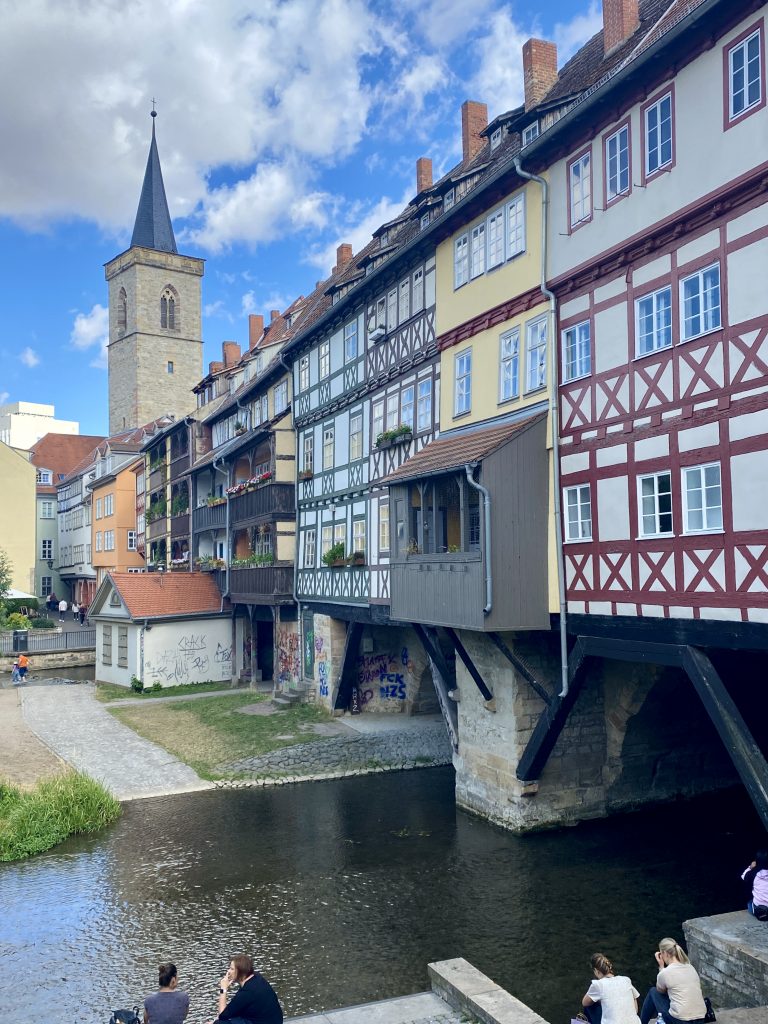


At the east end of the bridge, on the Wenigemarkt, stands the Agidienkirche (the Church of Sankt Aegidius). For a few cents, visitors can access the Methodist Church which is now the Agidienkirche but, I was told by the curator that I must not ascend the 33 metre high Red Tower. Why on earth not? Other people were up there. Well if you’ve seen one Methodist Church, you have seen them all (they are remarkably spartan) and so; immediately after I had made a brief inspection of the church itself, I set off up the Red Tower and I was rewarded with some fine views over the city. On the way out I discovered that the Agidienkirche is fitted with closed circuit tv. The curator had a fair bit to say to me and it wasn’t all polite but, it was worth it.
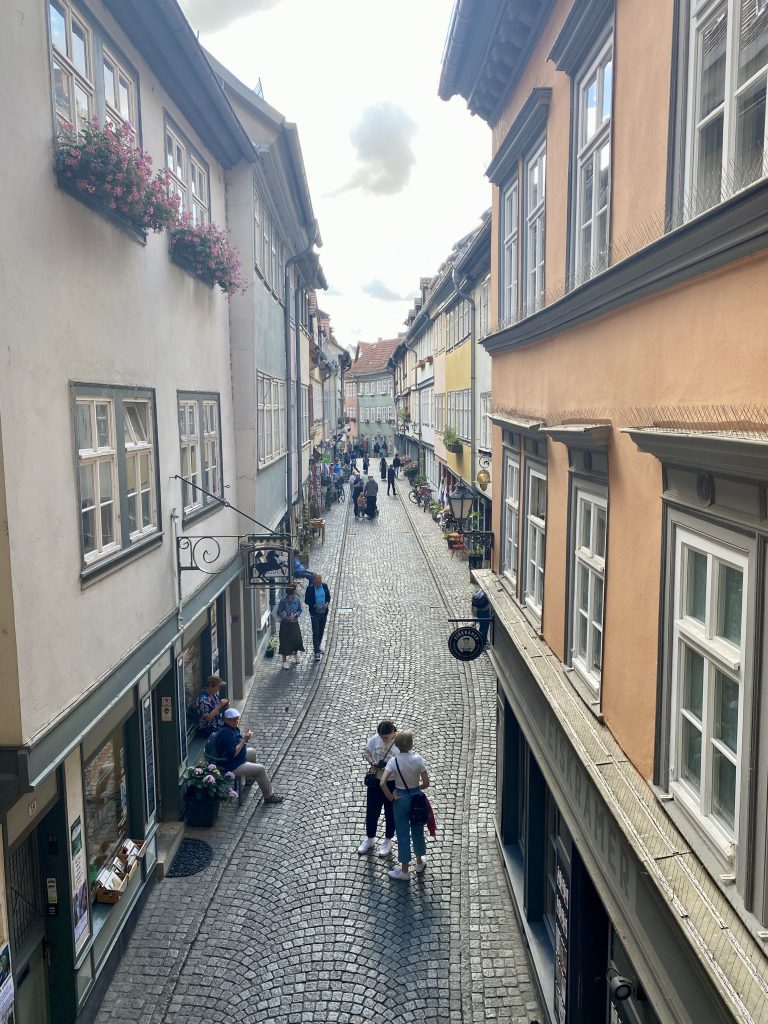
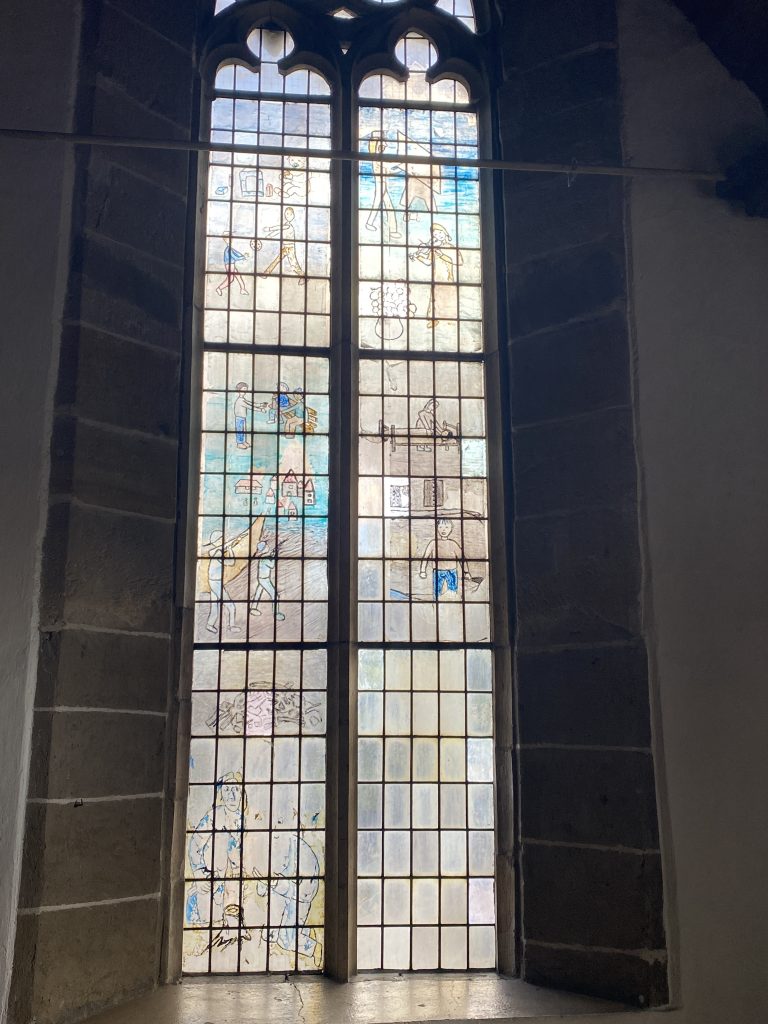
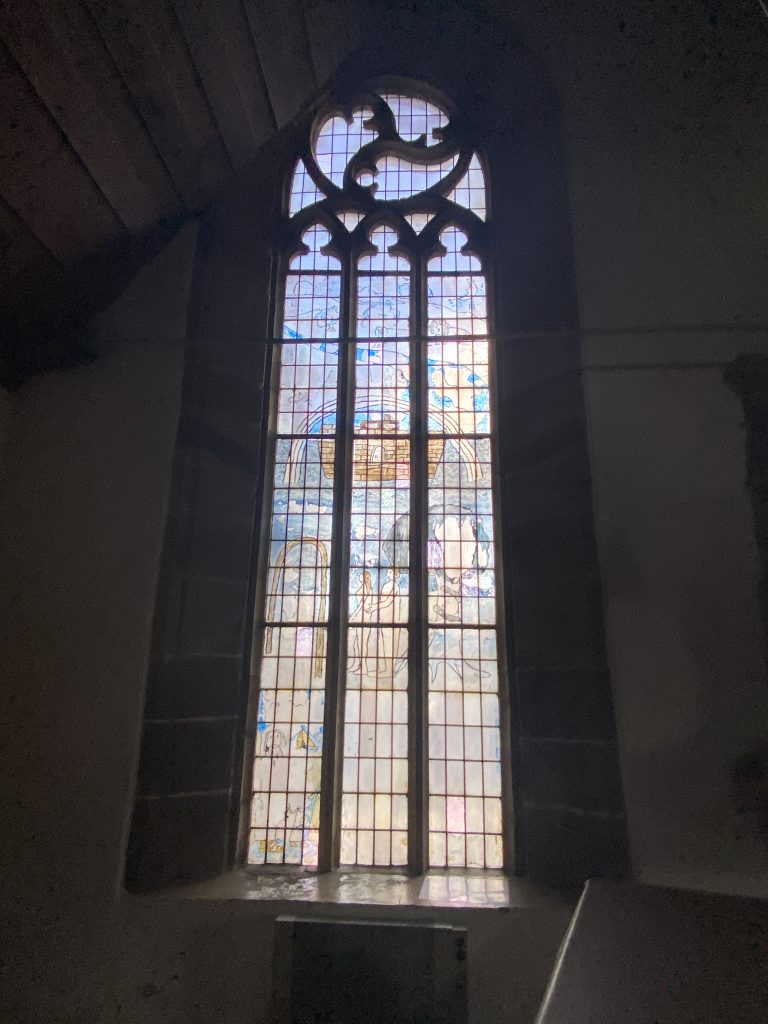
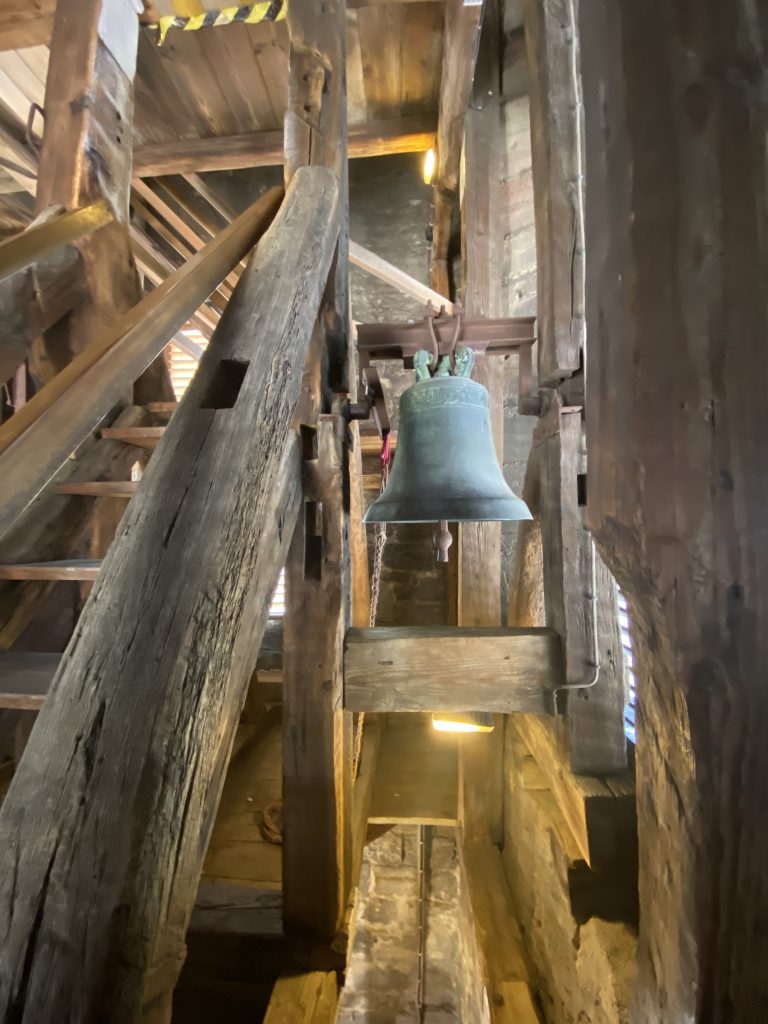
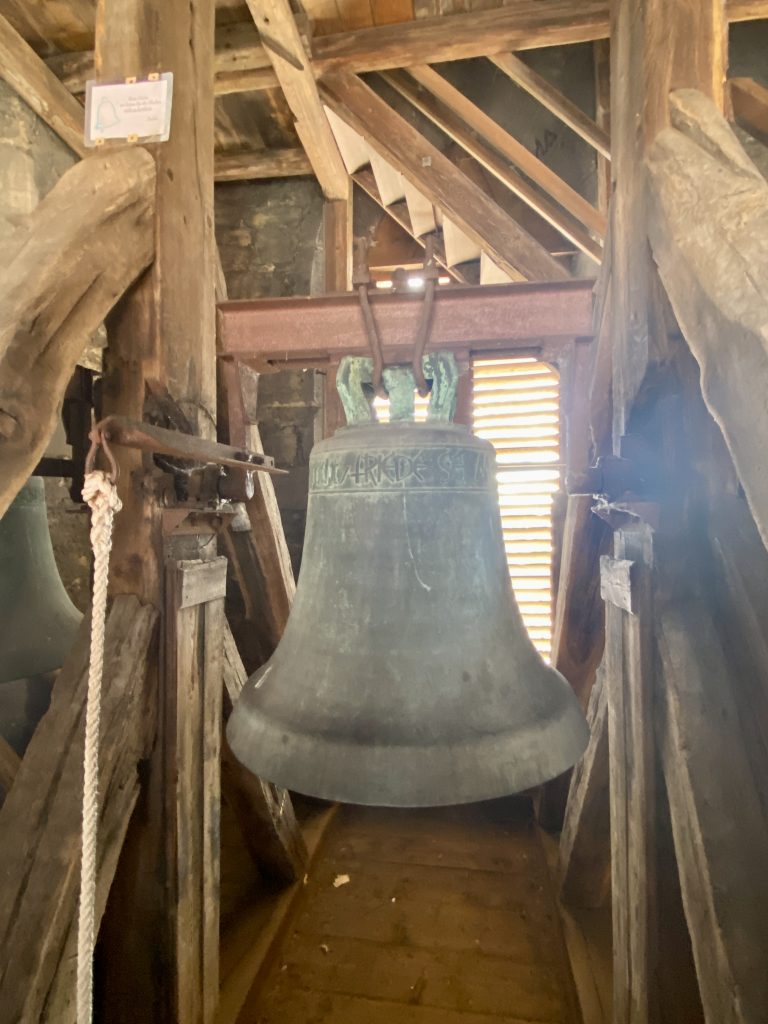
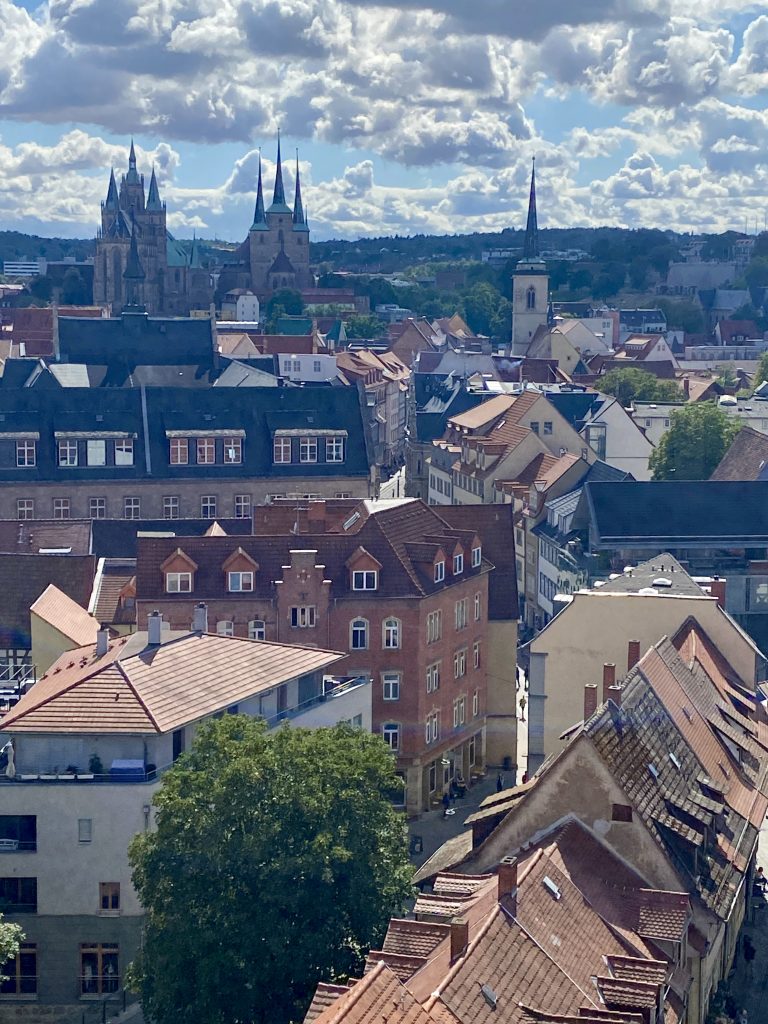
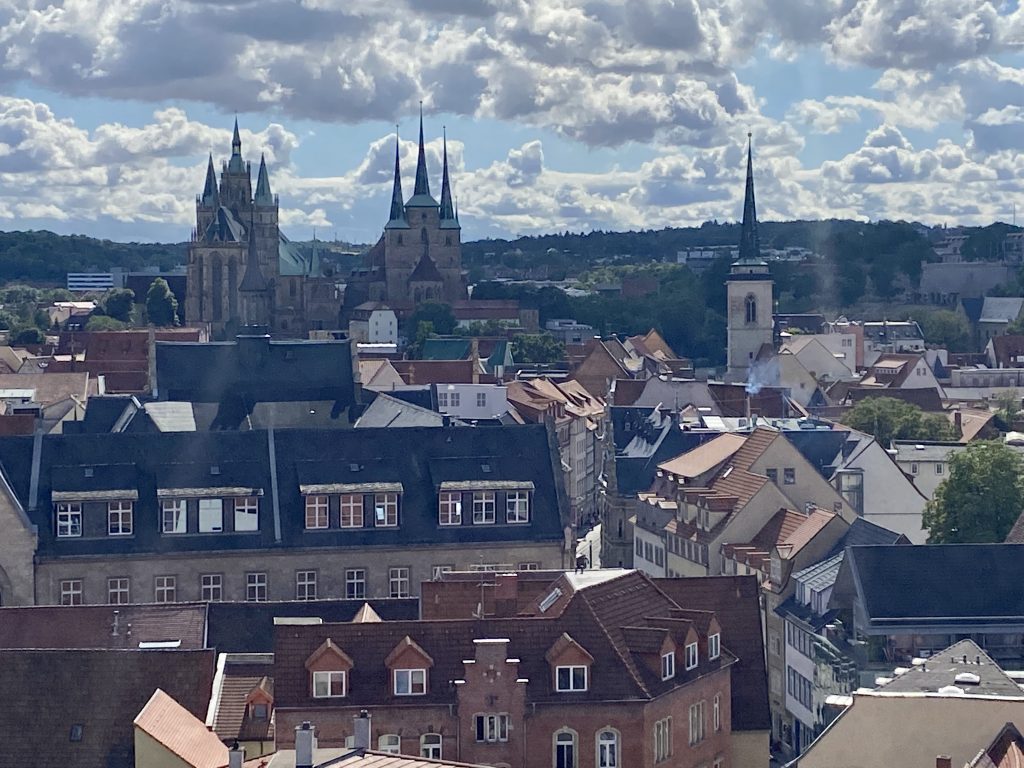
From the Agidienkirche I set off down the narrow alley formed by the properties on the Kramerbrucke. I mentioned previously that the properties are now given over to cafes and craft shops and, yes, there is also the odd tourist souvenir shop but, there is one particular place which simply has be visited. It is the “Haus der Stiftungen” and it is easily recognisable. It is an original property built in 1578 and it is run by a foundation which serves to promote the bridge. Entry is free and visitors are welcome to wander around the inside of the building.
One thing I did start to notice as I circled around the back of the bridge (looking for photo opportunities) were a series of rather incongruous ‘statues’ of various cartoon characters. Subsequent research revealed that they feature in a very popular TV programme on Germany’s Children’s TV Channel (KinderKanal or KIKA for short) which is run out of Erfurt. Vanya and her dog Beanie will be interested in those.


To the west of the Kramerbrucke is the Fischmarkt, a particularly picturesque square of mostly renaissance buildings which were originally dwellings. The city’s more modern Rathaus (Town Hall) also sits on this square, as does the Kunsthalle (Art Gallery) and an interesting statue, Der Romer. This statue was put there in 1591 and is of a Roman soldier holding the city’s flag aloft. I had no idea that the Romans made it so deep into Germany.
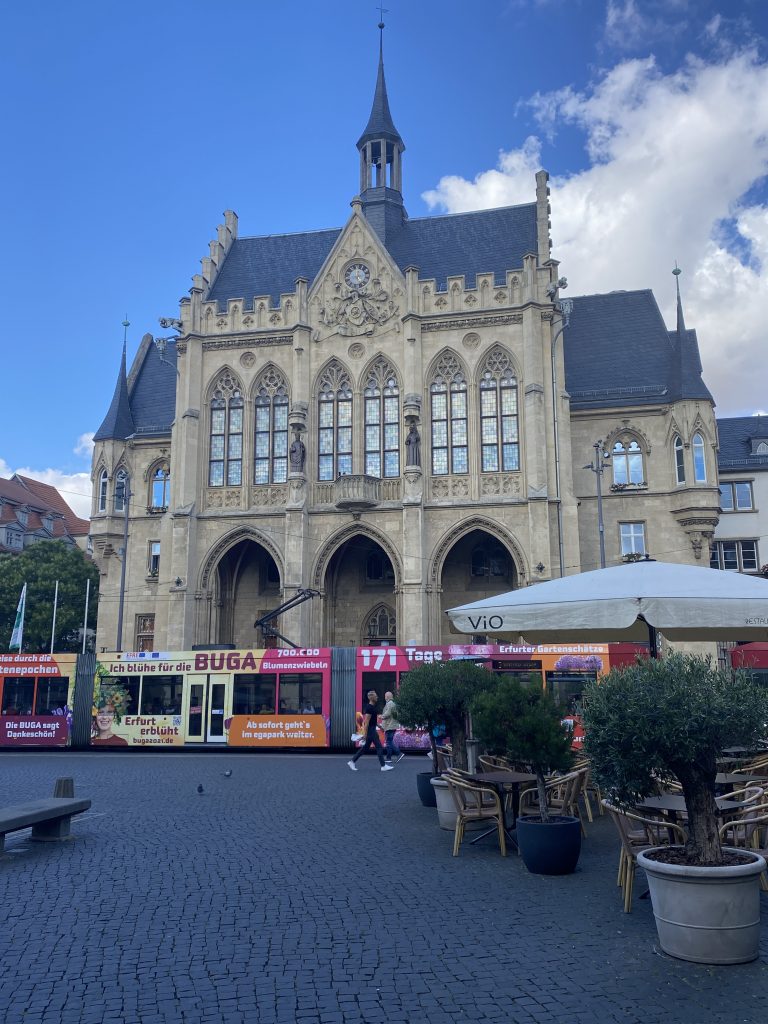
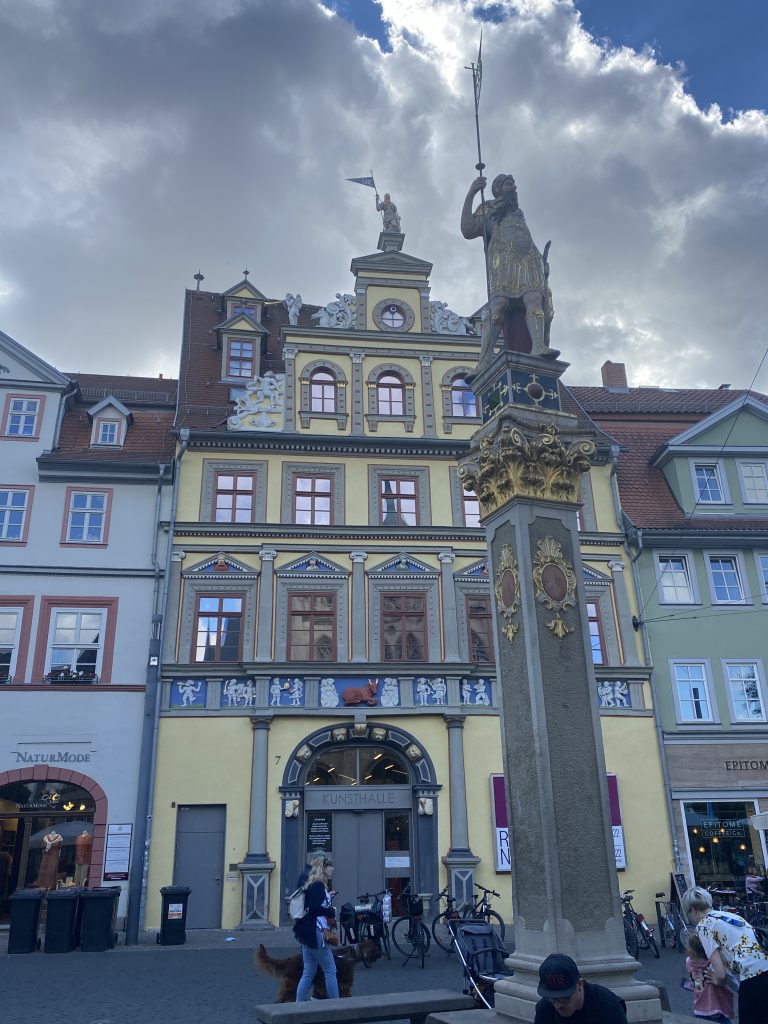
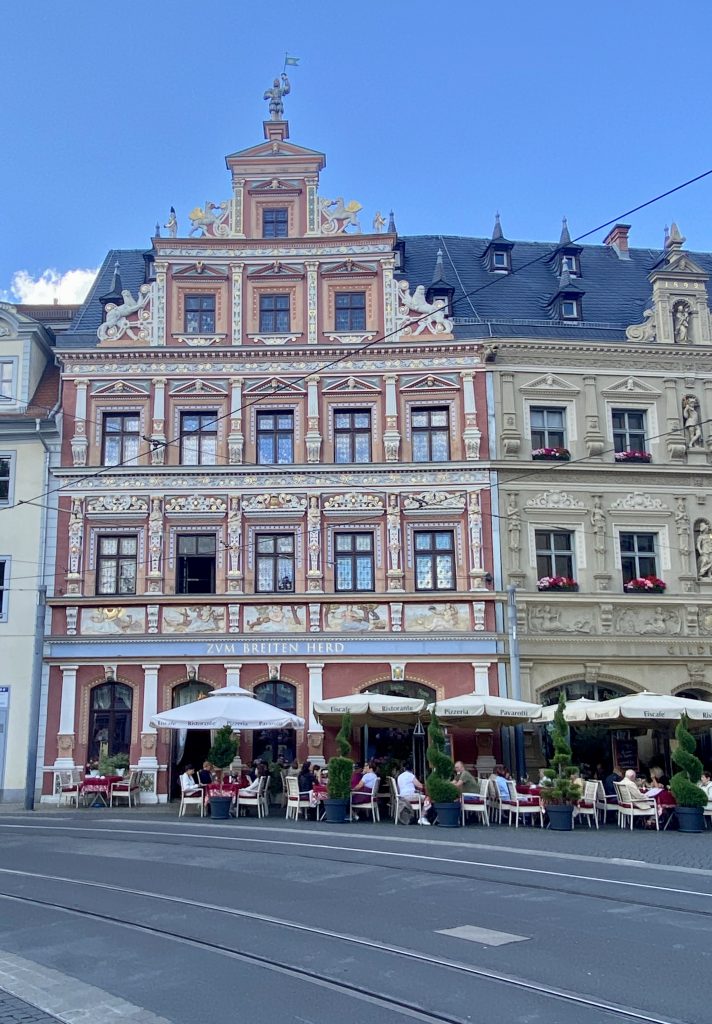
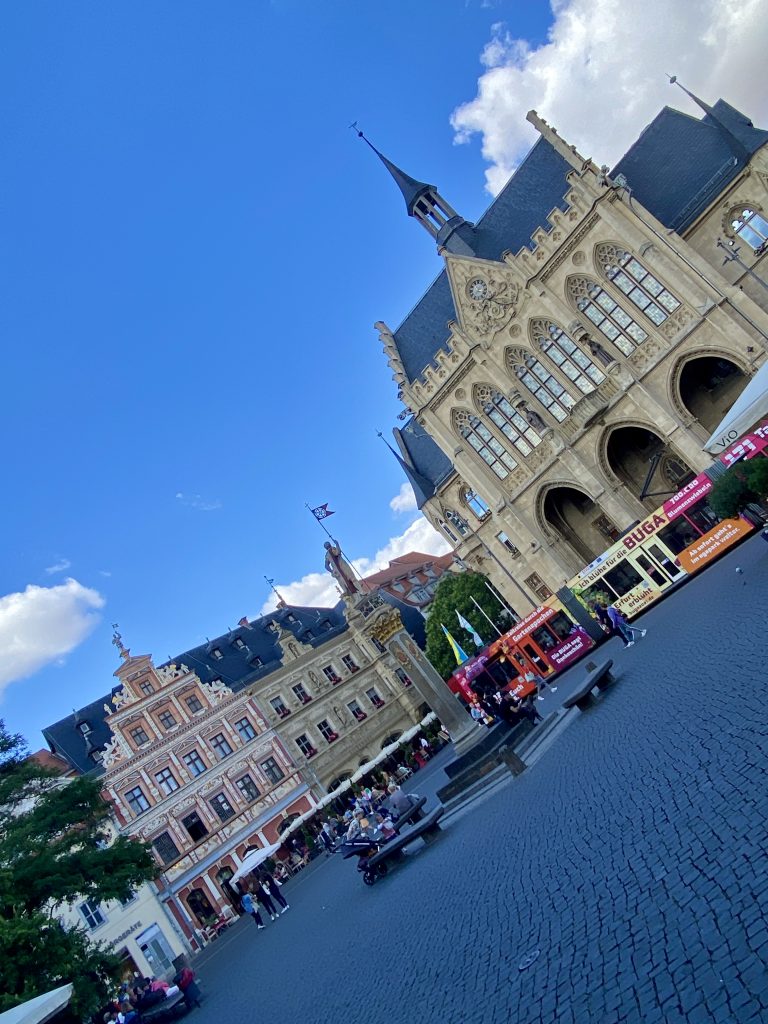
My primary interest during this first sortie into Erfurt was the Cathedral of St Mary which sits on the Dom Platz (no surprise there) but, en route I passed the Theatre Waidspeicher, a converted woad store which in 1986 was renovated and converted into the Erfurt Puppet Theatre. This theatre, using homemade puppets and props, puts on plays of fairy stories, adaptations of children’s books and modern dramas for children (during the day) and adults (in the evening). Judging by advertising outside the theatre, I suspect some of the performances for adults will be quite racy.
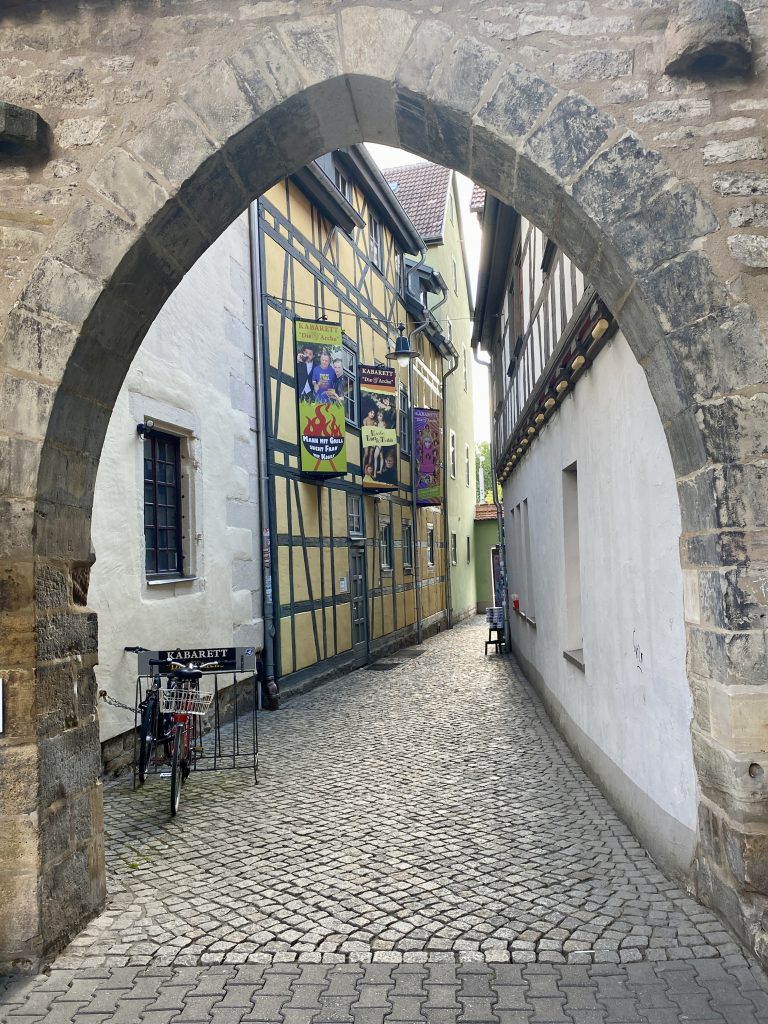
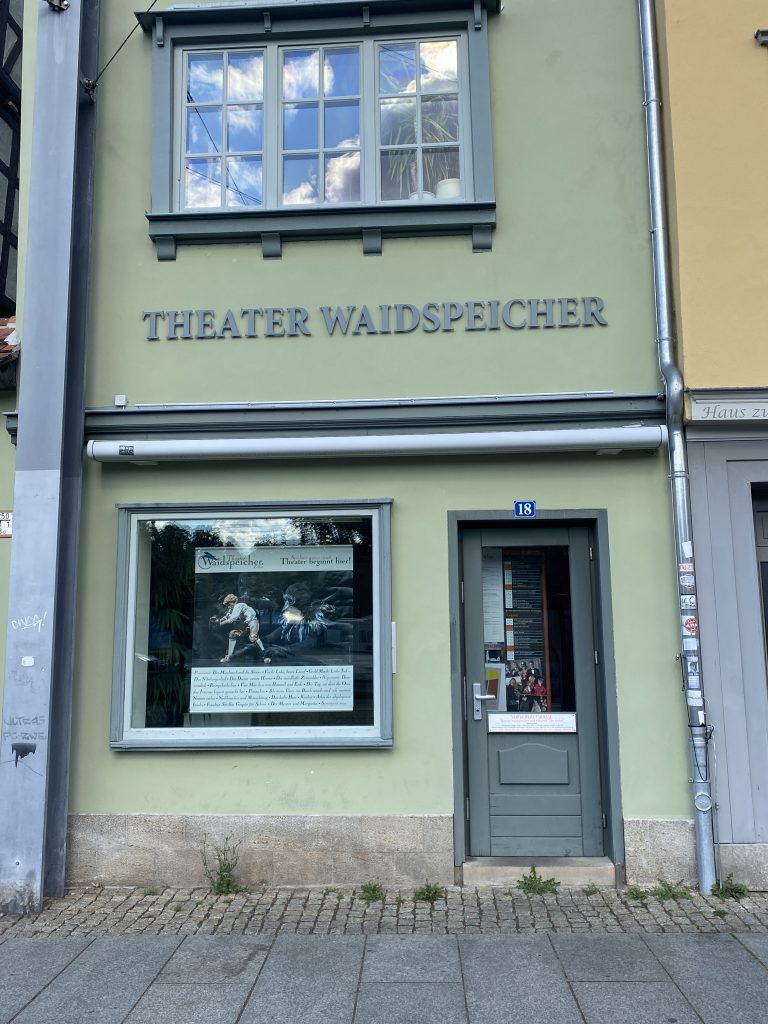
I made it to Dom Platz and the 12th century gothic style cathedral of St Mary, built on the site of the much older chuch of St Boniface, is everything I expected it to be; as is the smaller and older Sevirikirche alongside it. Unfortunately I was unable to take any decent photos of the front of the Cathedral and/or the Sevirikirche. The ‘Cathedral Steps Festival’ takes place on the Dom Square in front of the two churches every year during July/August and the festival stage and grandstands for this years open air operatic performance were already up and blocking all decent photo opportunities. My understanding is that this year’s performance will be Verdi’s ‘Nabucco’ but I swear I could hear some of Berlioz’s ‘Damnation of Faust’ being rehearsed whilst I was sitting on the square drinking a weissbier. Strong stuff that weissbier!
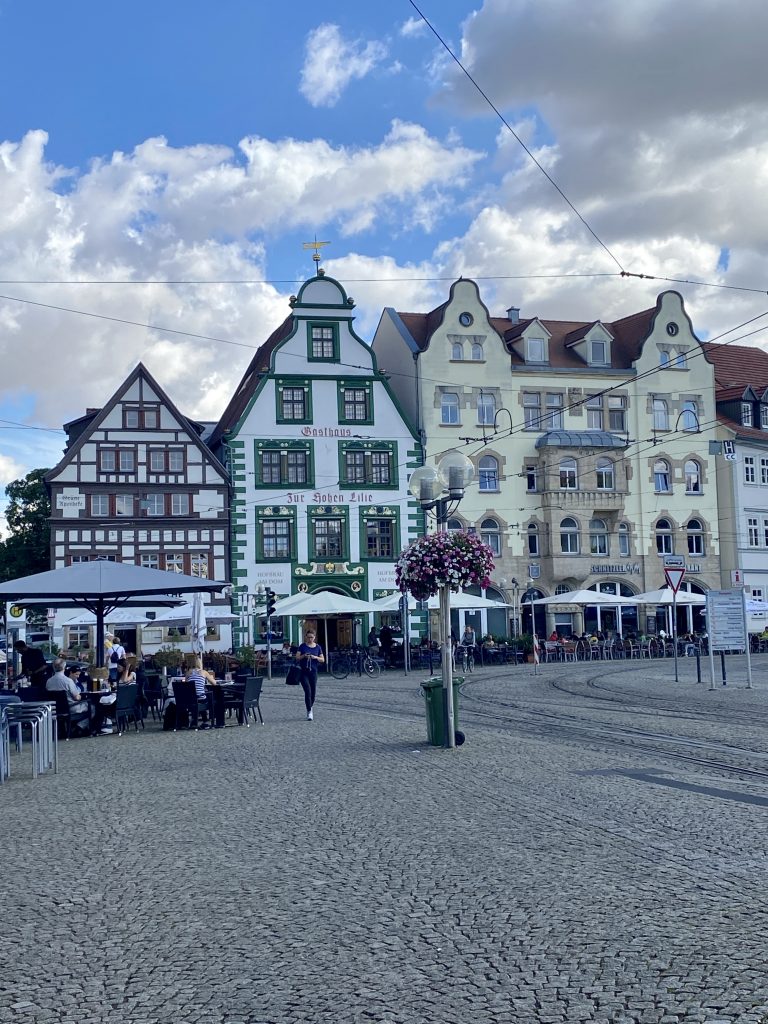
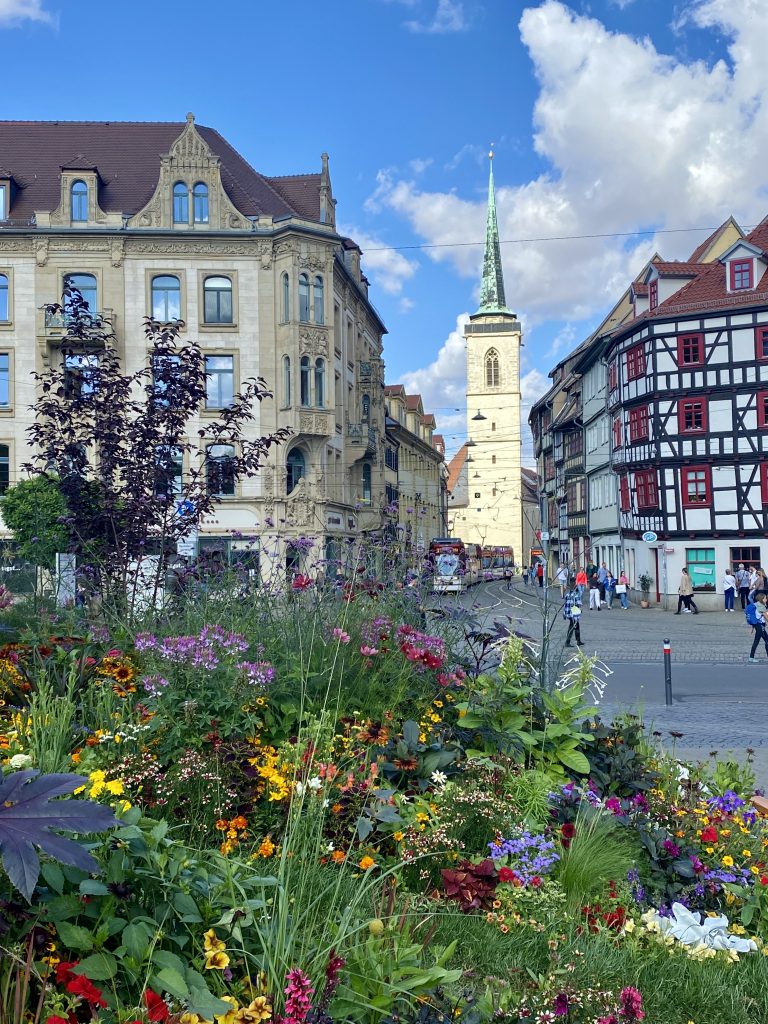
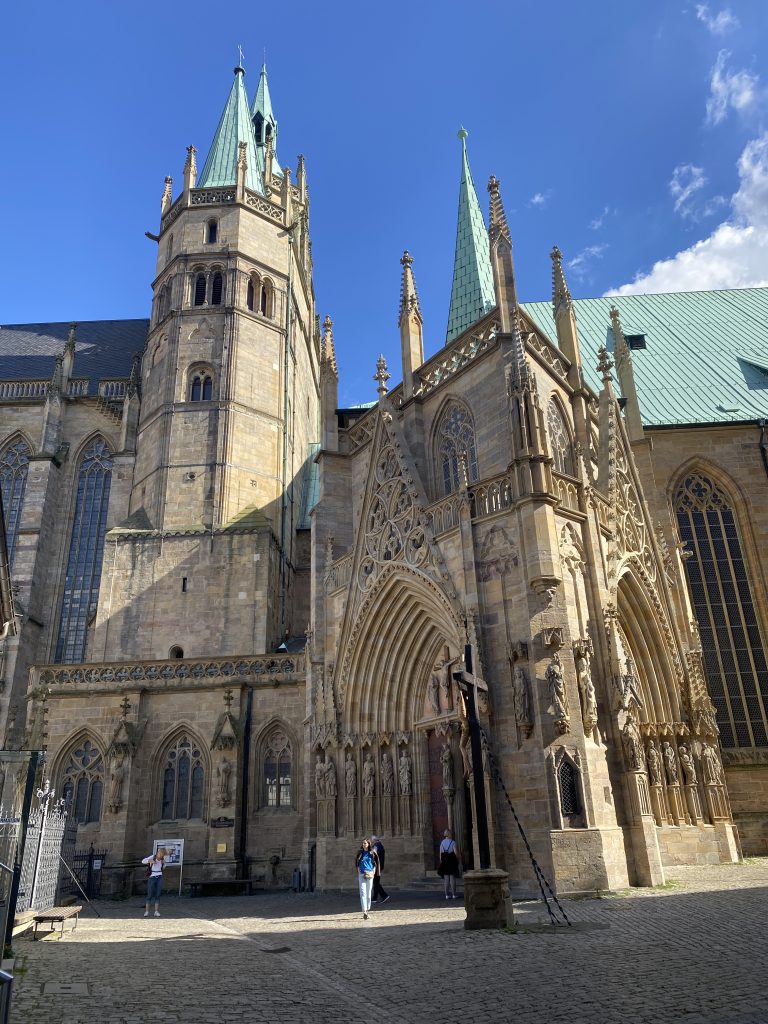
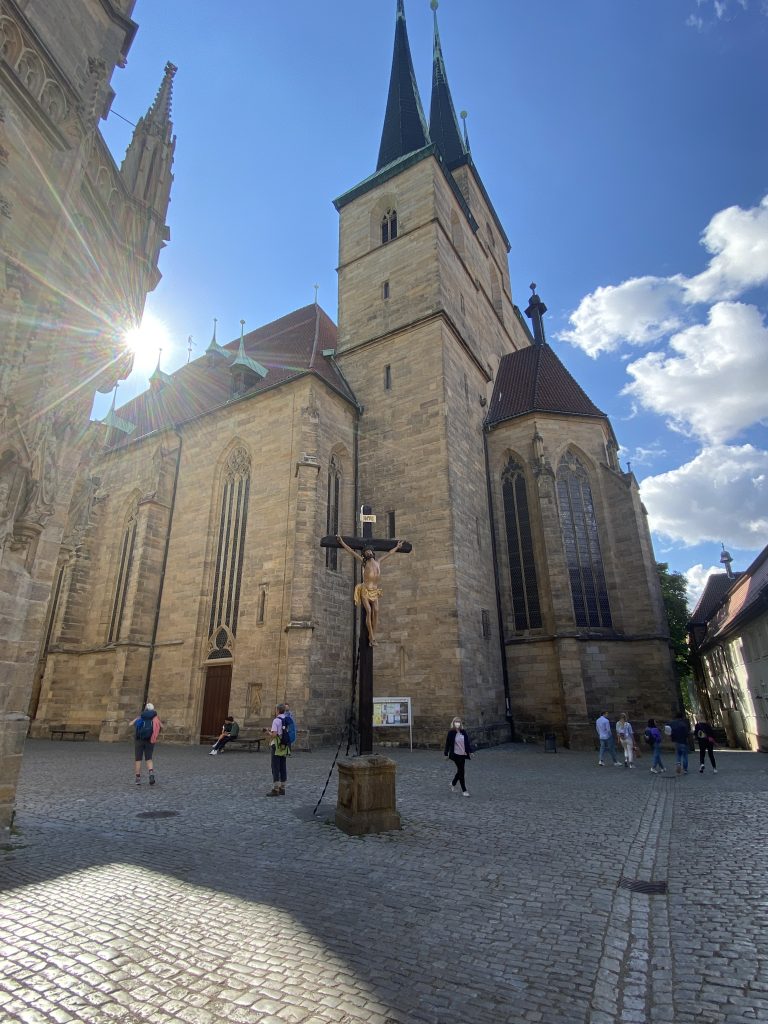
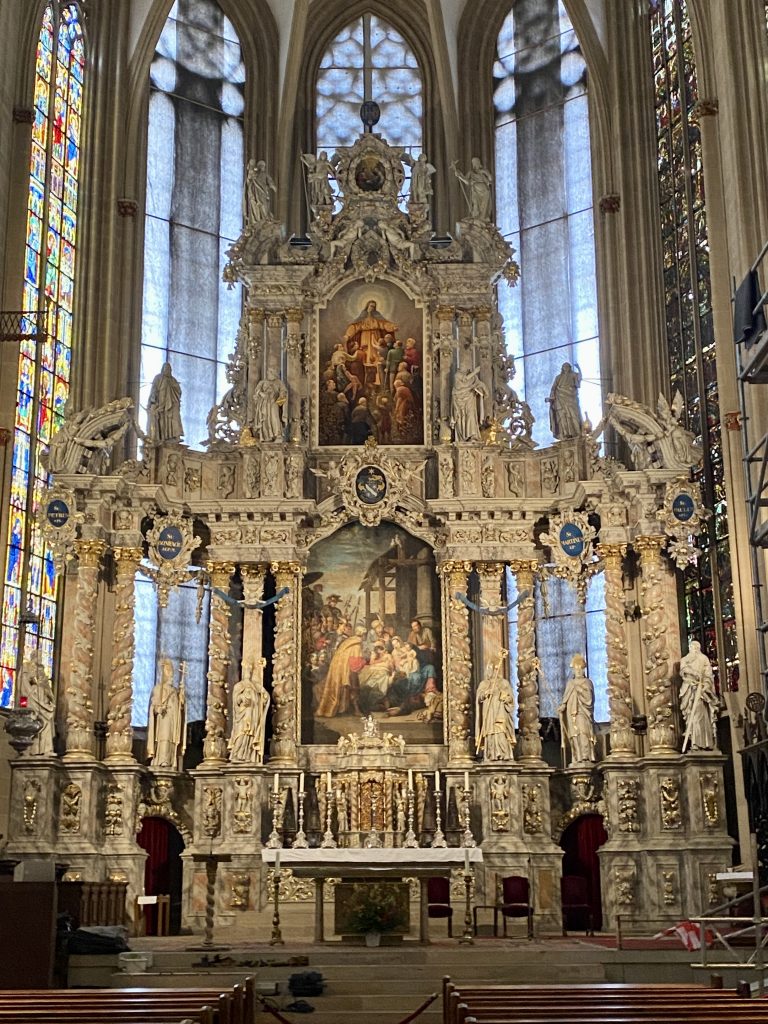
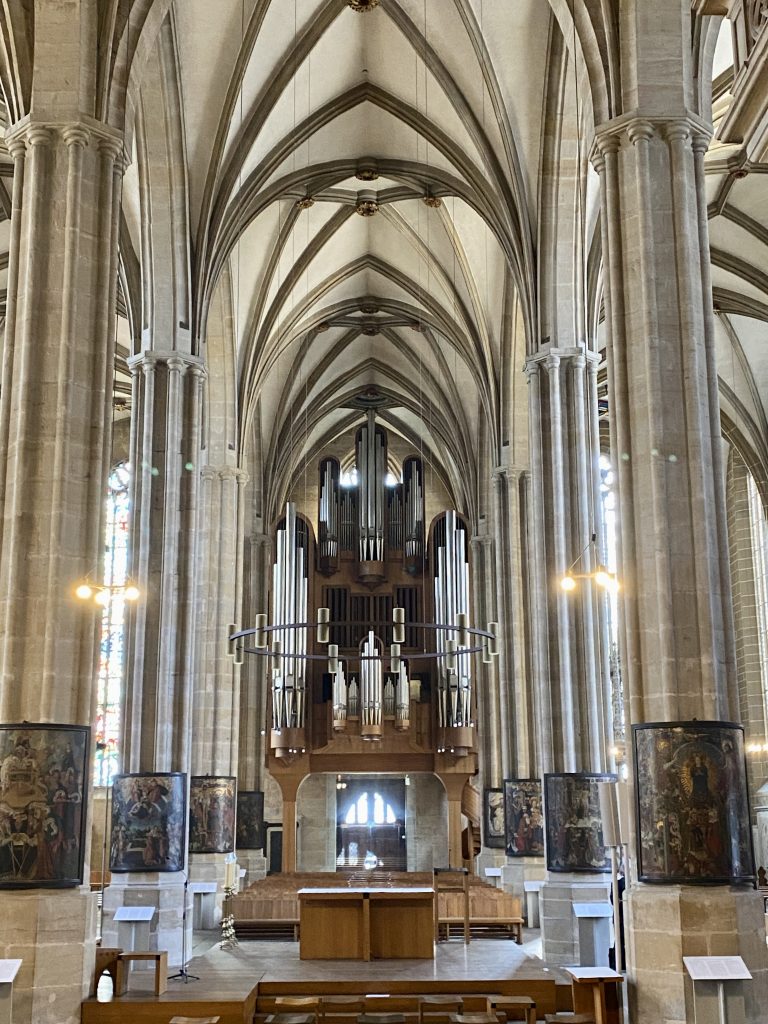
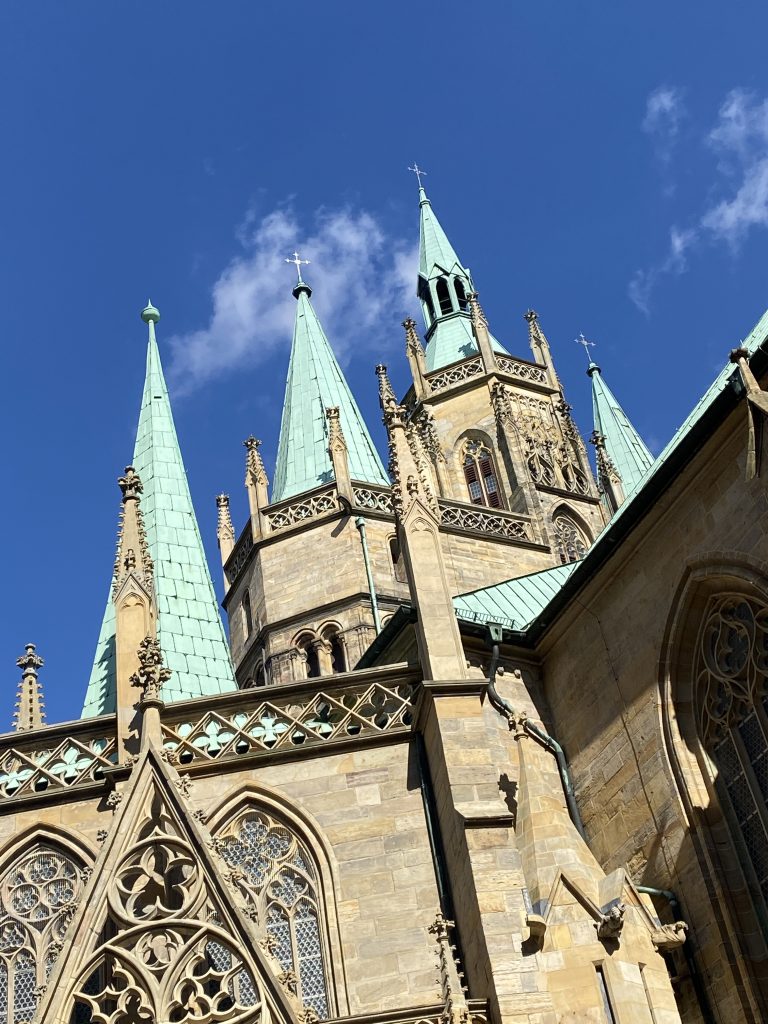
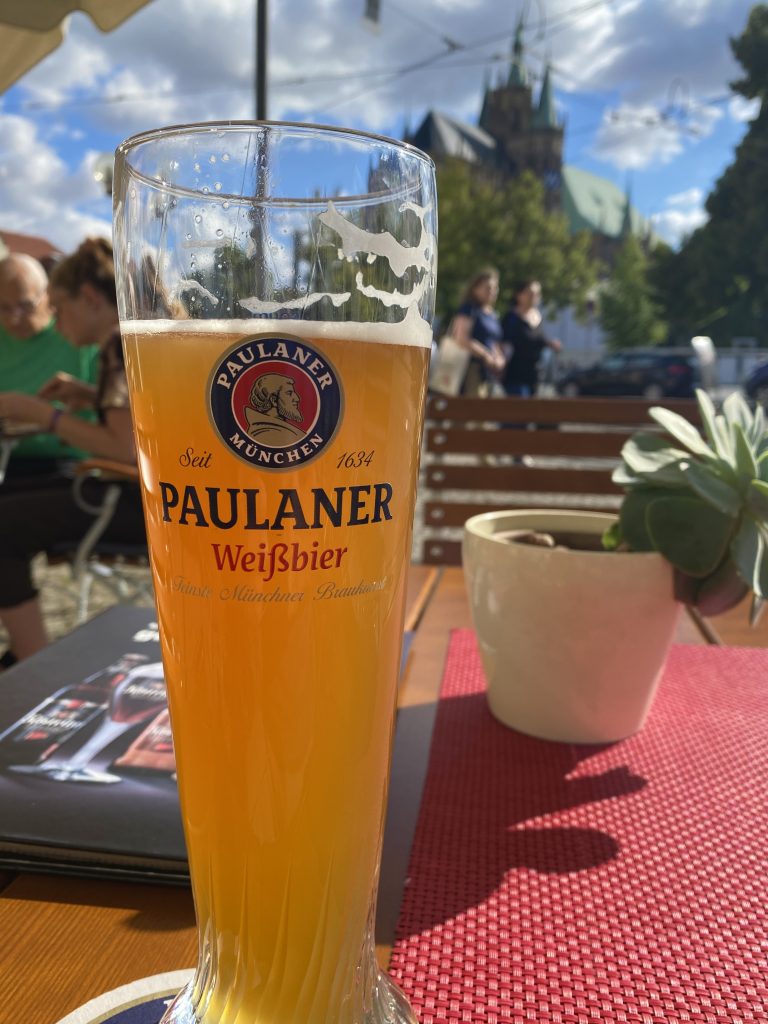
Overlooking the Dom Platz and the Cathedral and the Sevirikirche is the large Baroque Zitadelle Peterberg. However, I’ve seen enough fortresses on this tour already and elected to give it a miss. Anyway, I prefer castles to fortresses.
But, Erfurt, we are so glad we came.

